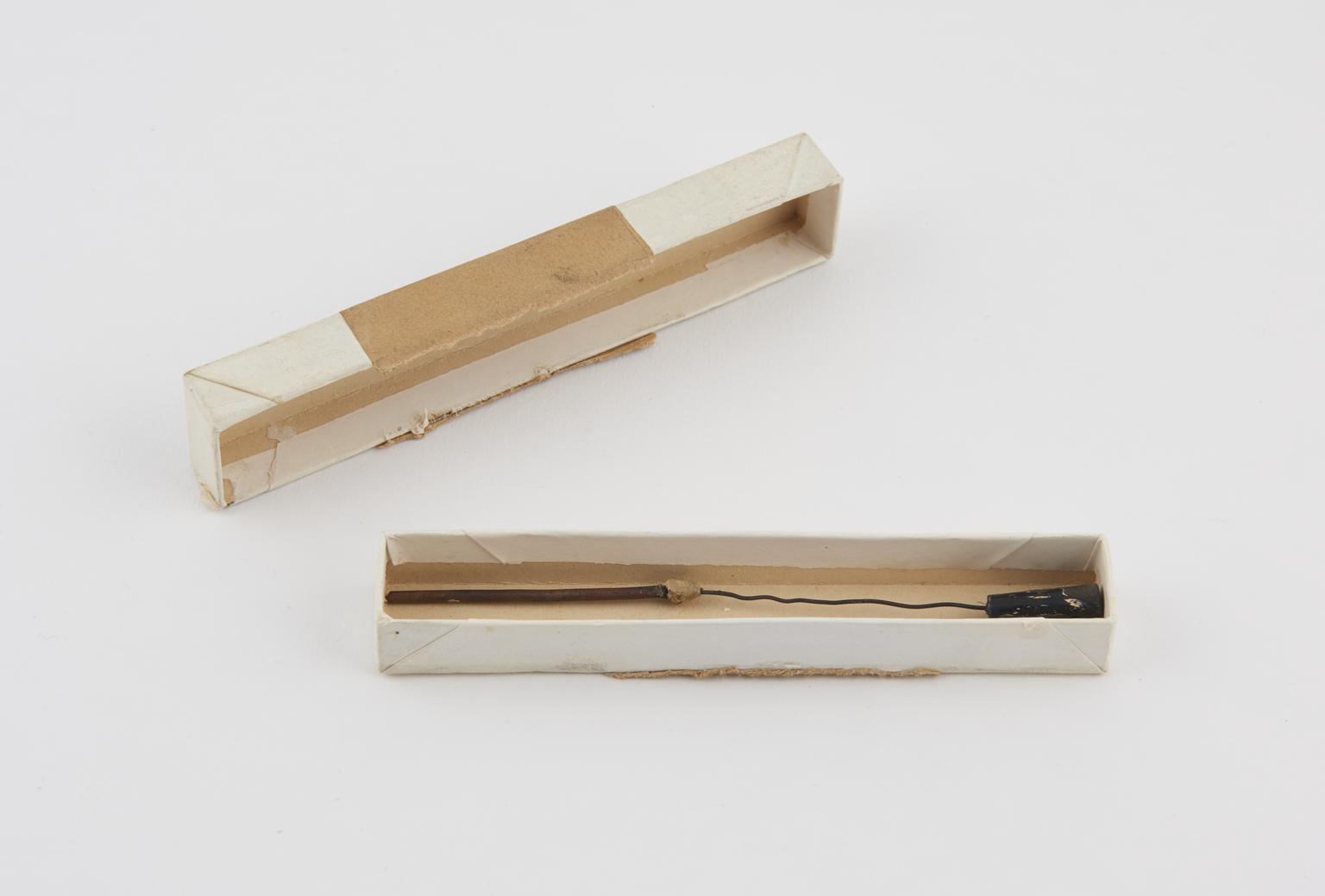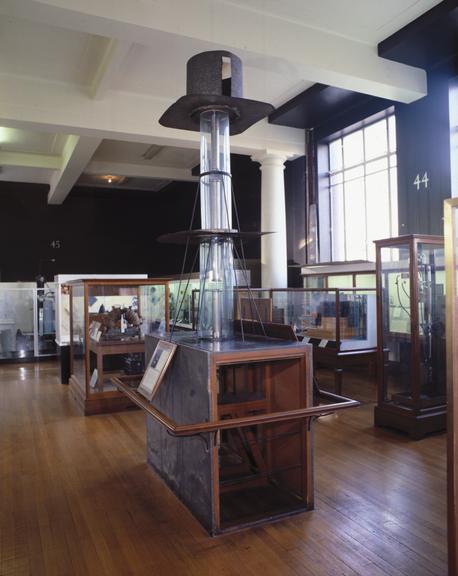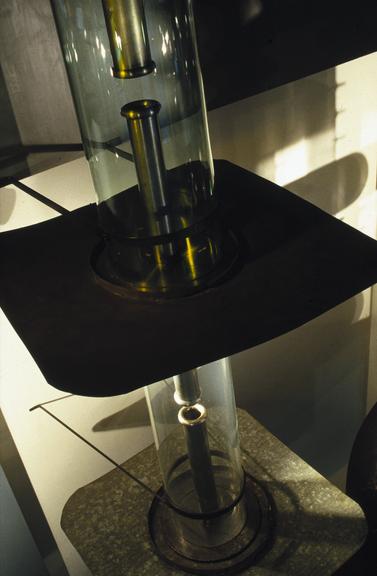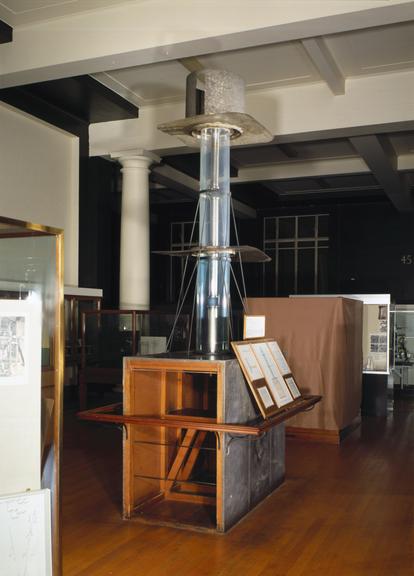Cockroft and Walton's Accelerator, 1932.
Lead sheathed observing cabin with microscope from the original apparatus used by Drs. Cockcroft and Walton for the artificial disintegration of the elements by swift protons.




Portion of the original apparatus used by Drs. Cockcroft and Walton for the artificial disintegration of the elements by swift protons, including accelerating tube and fittings, discharge tube, target and cap carrying mica window. The observing cabin and microscope are not original.
In April 1932, at Cambridge, John Cockcroft (1897-1967) and Ernest Walton used this machine to accelerate protons to disintegrate lithium nuclei. In 1928 Gamow had explained, using quantum mechanics, how a particle escaped from a nucleus by tunnelling out through the barrier holding it in. Cockcroft realised that comparatively low-energy particles might be able to tunnel into a nucleus, causing it to disintegrate. They built this accelerator to prove it, and received the Nobel Prize in 1951.
Lead sheathed observing cabin with microscope from the original apparatus used by Drs. Cockcroft and Walton for the artificial disintegration of the elements by swift protons.
Two glass cylinders and two metal plates from the original apparatus used by Drs. Cockcroft and Walton for the artificial disintegration of the elements by swift protons.

Section of connection wire from Drs. Cockcroft and Walton's apparatus observing cabin, unsigned, England, 1932


